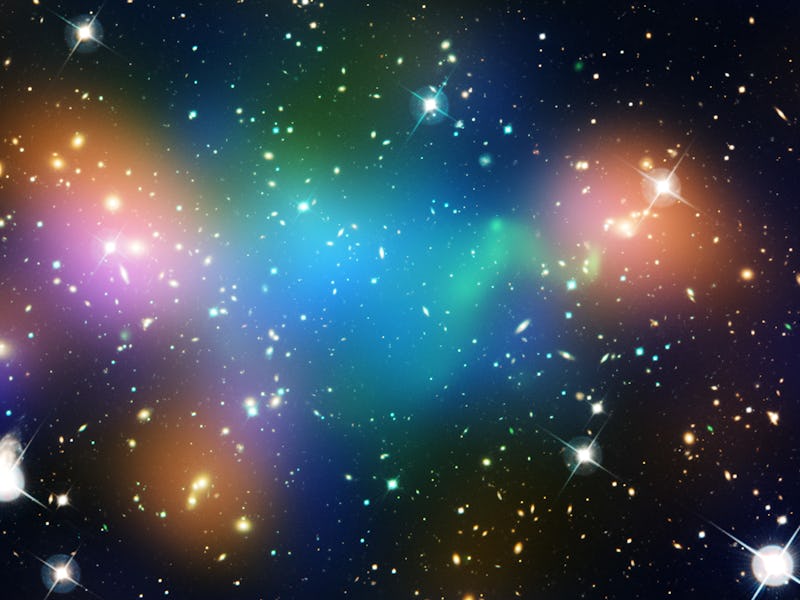The Secrets of Dark Matter Reveal How the Universe Has Evolved

In a distant universe some five billion years ago, outer space looked very different. Thanks to a mysterious, invisible thing called dark matter, the universe’s structure has transformed to what it is today.
A recent study in Astrophysical Journal explains how researchers at Hiroshima University have created a map of massive star-forming galaxies. In the distant universe five billion years ago, researchers found massive star-forming galaxies. But in the nearby universe, three billion years ago, these galaxies were not as apparent. In other words, as the universe has evolved, its structure has changed drastically over time.
“We expect this trend continues toward more distant universe but we need to investigate it,” Yousuke Utsumi, a project assistant professor at Hiroshima University, tells Inverse.
The cosmic web, or the distribution of large, empty regions called voids and dense regions, where galaxies exist, can help us understand where dark matter is located and how it interacts with our universe’s galaxies. Dark matter makes up about 27 percent of the universe and causes stars and galaxies that move in speeds and directions not accounted for by gravity.
In the cosmic web, there are large concentrations of galaxies, called clusters. But the action of gravity on dark matter also impacts the cosmic web’s formation. Over 14 billion years, gravity has caused dark matter halos to cluster together.
“Dark matter harbors materials to be galaxies,” Utsumi says. “Once the materials in a dark matter halo have condensed, the galaxies will be formed.”
Using telescopes like the Subaru Telescope at the Mauna Kea Observatory on Hawaii, scientists can map out entire galaxies. Although they can’t see dark matter directly, clusters of galaxies and weak lensing can trace where the dark matter is. Weak lensing works because galaxy clusters and the surrounding dark matter halo bends the light from more distant galaxies and distorts the images of them, allowing the matter to work somewhat like a lens.
By mapping out the cosmos, scientists plan to continue studying how the universe evolved and uncovering the secrets of dark matter.